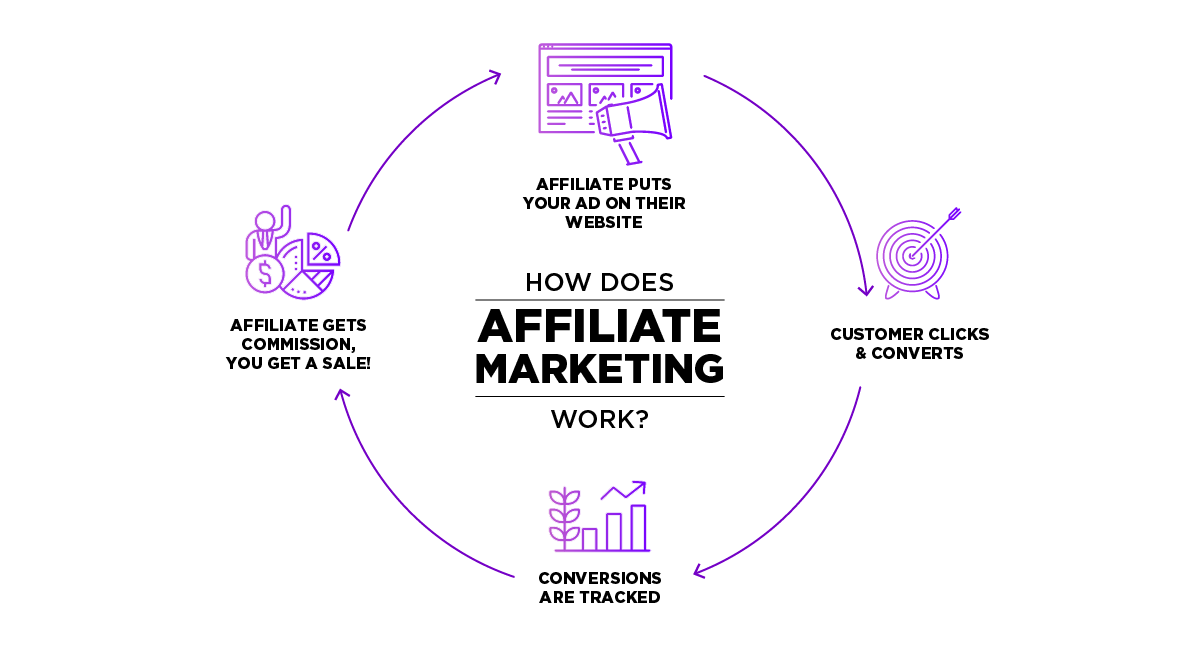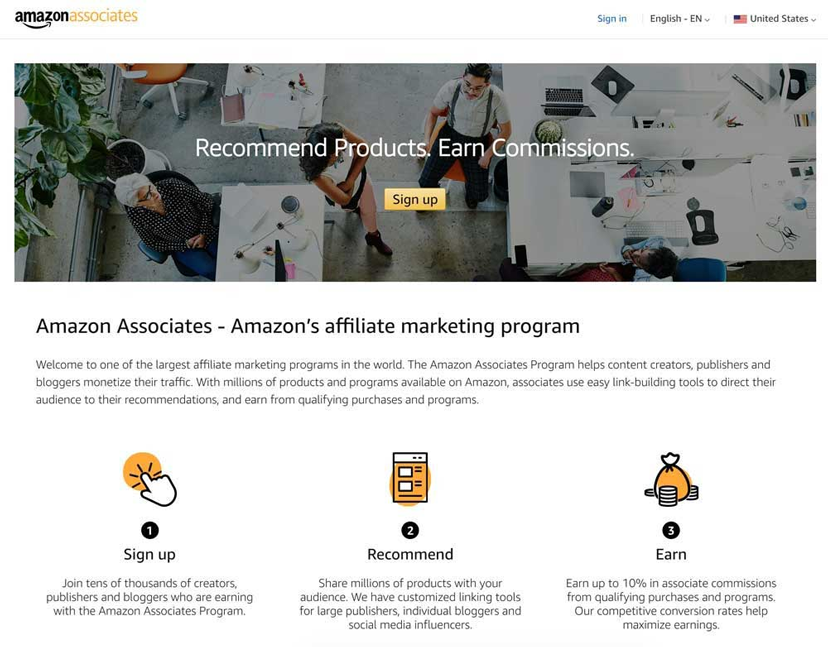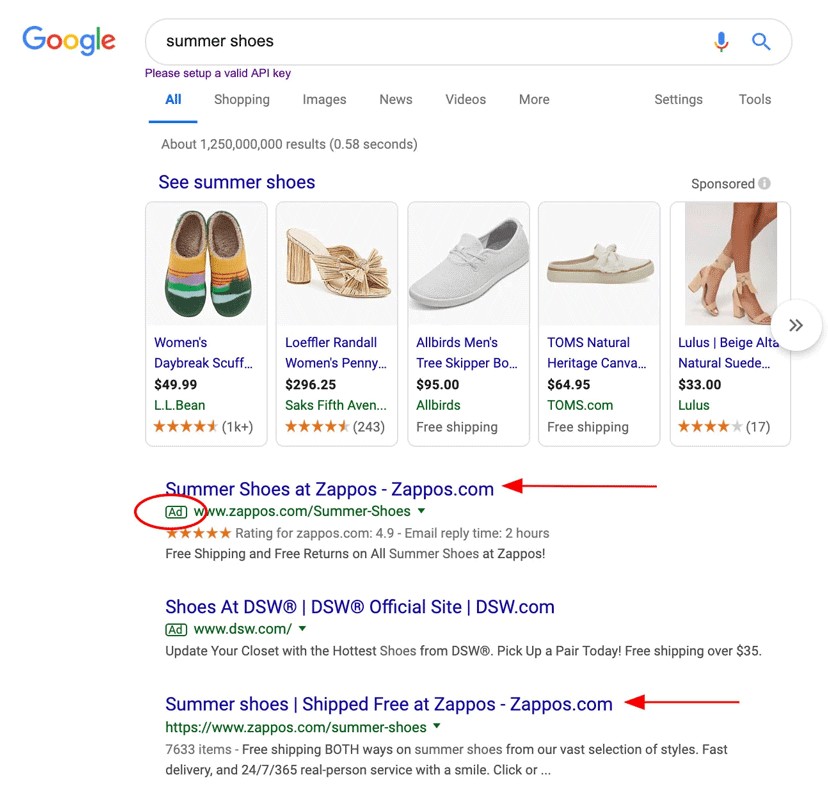Table of Contents
- What is Performance Marketing?
- Benefits
- The goals of performance marketing
- Different Types
- The Essential Process
- The Pricing Models
- In Performance Marketing, ROI Takes Center Stage
- Limitations
- Tips to be Successful
- FAQs
Performance marketing can be used for a variety of purposes, including lead generation, customer acquisition, app installs, and e-commerce sales.
By working with affiliates, publishers, or influencers who have an existing audience and can drive quality traffic to a website or app, advertisers can leverage the power of performance marketing to grow their business and achieve their marketing goals.
Performance Marketing can be a highly effective way to achieve maximum ROI (Return on Investment) for your marketing efforts.
Let’s step into the article to learn more about it!
What is Performance Marketing?

Performance marketing is a digital marketing strategy that is based on the principle of paying for the desired actions taken by a potential customer or audience. These desired actions can range from clicks, leads, sales, downloads, installs, or any other measurable action that aligns with the company’s objectives.
Unlike traditional advertising methods, where marketers pay a fixed cost for ad placement or exposure, performance marketing only pays for the actual results generated by the campaign. This approach allows marketers to allocate their budget more effectively and efficiently by focusing on campaigns that generate the highest return on investment (ROI).
Performance marketing operates on a cost-per-action (CPA) model, which means that the advertiser only pays when a specific action is taken. This model allows marketers to measure the success of their campaigns accurately and make data-driven decisions to optimize their efforts further.
Some of the most common performance marketing channels include search engine marketing (SEM), affiliate marketing, email marketing, social media advertising, and mobile app advertising. In each of these channels, the advertiser only pays when a specific action is taken, such as a click, a lead, or a sale.
Benefits
One of the primary advantages of performance marketing is its ability to track and measure the effectiveness of each campaign accurately. By using sophisticated tracking tools and analytics, marketers can identify which campaigns are generating the highest ROI and adjust their strategies accordingly.
Another advantage of performance marketing is its flexibility and scalability. Since advertisers only pay for the desired actions, they can adjust their budget and targeting parameters to maximize their reach and minimize their costs.
Unlike traditional forms of advertising, which often rely on impressions or clicks, performance marketing focuses on specific actions taken by the user, such as making a purchase or filling out a form.
Below are some of the key benefits of Performance Marketing:
Measurable results:
It allows you to track and measure the results of your campaigns. This means you can see exactly how much money you make for every dollar you spend on advertising.
Cost-effective:
It is based on results. You only pay for the actions that users take. This makes it a very cost-effective form of advertising, as you’re not wasting money on clicks or impressions that don’t convert into sales.
Targeted audience:
You can target your audience very precisely. This means you can reach the people who are most likely to be interested in your product or service, increasing the chances of a successful conversion.
Flexibility:
It allows you to adjust your campaigns in real-time based on the results you’re seeing. This means you can optimize your campaigns for maximum performance, and make changes quickly if something isn’t working.
Brand building:
While performance marketing is focused on driving conversions, it can also help build your brand. By reaching your target audience with relevant messaging and offers, you can increase brand awareness and loyalty over time.
The goals of performance marketing
Performance marketing is a type of digital marketing that focuses on generating measurable results, such as clicks, leads, sales, or other desired actions from consumers.
The goals of performance marketing may vary depending on the specific campaign, but generally, they include:
Increase conversions:
The primary goal of performance marketing is to increase the number of conversions, whether it’s leads, sales, or other desired actions from consumers. The ultimate objective is to generate revenue for the company.
Improve ROI:
The return on investment (ROI) is a crucial metric in performance marketing. By optimizing campaigns and improving targeting and messaging, performance marketers aim to improve their ROI and make the most out of their advertising budget.
Reach specific audiences:
Performance marketing campaigns are highly targeted, and they aim to reach specific audiences based on demographics, behaviours, and interests.
The goal is to find the most engaged and relevant audience for the brand.
Increase brand awareness:
Campaigns can also increase brand awareness and visibility, especially for new or lesser-known brands. By targeting the right audience and delivering engaging messaging, brands can make a lasting impression and generate buzz around their products or services.
Different Types
Here are some of the most common types of performance marketing:
Affiliate Marketing:
In affiliate marketing, the advertiser provides the affiliate with a set of marketing materials, such as banners, product descriptions, and links.

The affiliate then promotes the advertiser’s products or services through their website, blog, social media channels, email lists, or other marketing channels.
The affiliate includes their unique affiliate link in their promotional content, which directs users to the advertiser’s website or product landing page.
When a user clicks on the affiliate’s link and makes a purchase, the affiliate earns a commission, which is typically a percentage of the sale value.
The commission rate can vary depending on the advertiser, the product or service, and the affiliate network.
Affiliate marketing can benefit both the advertiser and the affiliate.
The advertiser can reach a wider audience and increase sales without incurring significant marketing costs.
There are several different types of affiliate marketing programs, including:
- Pay-per-sale: It is when a user makes a purchase through their affiliate link.
- Pay-per-click: when a user clicks on their affiliate link and visits the advertiser’s website.
- Pay-per-lead: when a user submits their contact information or completes a specific action, such as signing up for a newsletter or requesting a quote.
Affiliate marketing networks, such as Amazon Associates, ShareASale, and Commission Junction, facilitate the relationship between advertisers and affiliates by providing a platform for tracking sales, managing commissions, and providing marketing materials.

To be successful in affiliate marketing, affiliates must focus on building trust with their audience and promoting products or services that align with their audience’s needs and interests.
Banner Advertising
Banner ads are a type of digital advertising that appear as rectangular graphics or images on web pages, typically at the top, bottom, or sides of the content. They are often used to promote a product or service, generate leads or sales, or raise brand awareness.

Banner ads can come in different sizes, ranging from small buttons to large billboard-like displays. They can be static or animated and may contain text, images, and other multimedia elements.
Banner ads are often sold on a cost-per-impression (CPM) or cost-per-click (CPC) basis, where advertisers pay a fee for every thousand impressions or click the ad receives
Influencer Marketing:
In order to promote a brand’s goods or services, influencer marketing entails collaborating with people who have a sizable following on social media sites like Instagram, YouTube, and TikTok.
These individuals, also known as influencers, are typically experts in a particular niche and have a loyal audience that trusts their recommendations.
Influencer marketing can be an effective way for brands to reach their target audience and increase brand awareness, as well as drive sales and engagement. It can also help to create a more authentic and relatable brand image, as influencers are seen as trusted sources of information and opinions.
Native Advertising
Native advertising is a form of online advertising that matches the form and function of the platform or medium on which it appears. The idea behind native advertising is to make the ads look like they belong on the platform, so they don’t appear as intrusive as traditional banner ads.

Suppose you are reading an article about healthy breakfast options on a health and wellness website.
As you scroll down the page, you see a section labeled “Sponsored” or “Recommended for you.” In this section, you see a picture of a granola bar with a caption that reads “Try our delicious and healthy granola bars for a nutritious breakfast.” This is an example of native advertising.

The native ad is designed to look and feel like a natural part of the content, so readers are more likely to engage with it. It is an effective way for brands to promote their products or services without disrupting the user experience or appearing too pushy.
Social Media Marketing
Social media marketing is the practice of using social media platforms, such as Facebook, Instagram, Twitter, LinkedIn, and others, to promote a brand, product, or service.
This type of marketing involves creating and sharing content, as well as engaging with social media users to build relationships and attract new customers.
Social media marketing can take many forms, including:
- Creating and sharing posts on social media platforms
- Running social media ads to target specific audiences
- Engaging with followers and responding to comments and messages
- Influencer marketing, where a brand partner with social media influencers to promote their products or services
- Creating and sharing video content on platforms like YouTube and TikTok
Social media marketing has become an essential component of many businesses’ overall marketing strategy, as it allows them to reach a large audience at a relatively low cost. However, it requires a well-planned strategy and consistent effort to be successful.
Email Marketing
Email marketing is a type of digital marketing that involves sending commercial messages or promotional content to a group of people via email. The goal of email marketing is to build relationships with current and potential customers, promote products or services, and ultimately drive sales.
Email marketing can be a powerful tool for businesses of all sizes to reach their target audience, build relationships, and drive sales. However, it’s important to ensure that your email campaigns are well-designed, targeted, and relevant to your audience to achieve the best results.
Here’s an example of an email marketing campaign for a hypothetical clothing brand:
Subject: Spring Fashion Trends You Won’t Want to Miss
Hi [subscriber name],
As the weather gets warmer, we’re excited to introduce our new spring collection! From floral dresses to lightweight jackets, we’ve got everything you need to update your wardrobe for the season.
Here are some of our top picks:
- Floral Maxi Dress: Perfect for brunch with the girls or a weekend getaway, this dress is both comfortable and stylish.
- Denim Jacket: A classic piece that never goes out of style, our denim jacket is a must-have for any wardrobe.
- Striped T-Shirt: Easy to dress up or down, this t-shirt is versatile and on-trend.
And don’t forget about our accessories! Our new line of sunglasses and handbags will complete any outfit.
As a valued subscriber, we’re offering you an exclusive discount of 20% off your entire purchase.
Simply use the code “SPRING20” at checkout to redeem.
Thank you for choosing our brand and we hope you enjoy our spring collection!
Best,
[Brand Name]
In this email, the clothing brand is promoting its new spring collection and offering an exclusive discount to its subscribers.
They’re also providing helpful information about the products and include visuals to showcase them. This email is well-targeted to subscribers who are interested in fashion and likely to make a purchase.
Search Engine Marketing
Search Engine Marketing (SEM) is a form of digital marketing that involves promoting websites by increasing their visibility in search engine results pages (SERPs) through paid advertising. SEM encompasses various strategies, including paid search ads, pay-per-click (PPC) advertising, and search engine optimization (SEO).

Paid search ads are advertisements that appear at the top and bottom of the search engine results page. These ads are created through platforms like Google Ads and Bing Ads, and businesses bid on specific keywords that trigger their ads to appear when users search for those keywords. Advertisers only pay when users click on their ads, which is why this form of advertising is known as pay-per-click (PPC) advertising.
In addition to paid search ads, SEM also includes SEO, which is the practice of optimizing a website to improve its ranking in organic search engine results in pages. This is achieved through various tactics, including keyword research, on-page optimization, link building, and content creation.
Content Marketing
The goal of content marketing is to draw in and keep the attention of a certain target audience by producing and distributing valuable and pertinent material.
The goal of content marketing is to establish a relationship with the audience, build brand awareness, increase customer loyalty, and ultimately drive profitable customer action.
Blog entries, articles, podcasts, videos, infographics, social media postings, whitepapers, case studies, e-books, webinars, and more are all examples of content marketing formats.
The content created should align with the target audience’s interests, preferences, and needs and provide value in the form of information, education, entertainment, or inspiration.
The benefits of content marketing include:
- Building brand awareness and credibility
- Increasing website traffic and search engine rankings
- Generating leads and sales
- Fostering customer loyalty and retention
- Establishing a thought leadership position in the industry
The Essential Process
Performance marketing is an iterative process that involves constant testing, measuring, and optimization to achieve the best results. By following these key steps, you can develop effective performance marketing campaigns that drive measurable results and achieve your business goals.
Developing a performance marketing strategy requires a clear understanding of your business goals and objectives, as well as a deep understanding of your target audience. Here are some steps to help you develop a successful performance marketing strategy
The process of performance marketing involves several key steps, including:
- Setting goals:
The first step in performance marketing is to set specific goals that you want to achieve, such as increasing website traffic, generating leads, or driving sales. These goals should be measurable and tied to specific metrics.
- Defining the target audience:
Once you have set your goals, you need to define your target audience. This includes identifying their demographics, interests, and behaviours. The more specific you can be about your target audience, the better you can tailor your marketing campaigns.
Use data analysis tools to gather insights into their behaviour, demographics, and buying patterns.
- Developing the campaign:
The next step is to develop your marketing campaign. This includes choosing the right channels to reach your target audience, creating compelling ad copy and creatives, and setting the budget for your campaign.
- Launching the campaign:
Once your campaign is developed, you can launch it on the chosen channels. This may involve working with publishers, such as social media platforms, websites, or email lists, to display your ads to their audience.
- Measuring results:
As your campaign runs, you need to measure its results using key metrics such as clicks, conversions, and revenue. This will allow you to determine the effectiveness of your campaign and make adjustments as needed.
Usage of tracking tools to monitor your campaign’s performance. You need to know what’s working and what’s not, so you can make adjustments and optimize your campaigns.
- Optimizing the campaign:
Based on the results of your campaign, you can make adjustments to optimize its performance.
Elements of the campaigns are tested, such as headlines, ad copy, and landing pages, to see what works best. Use data to optimize your campaigns, and make data-driven decisions.
- Scaling the campaign:
Once you have optimized your campaign and achieved positive results, you can scale it to reach a larger audience and drive more conversions.
The success of your campaigns is measured by analyzing key performance indicators (KPIs) such as click-through rates, conversion rates, and ROI. Use this data to refine your strategy and make improvements.
Remember, a successful performance marketing strategy requires ongoing testing, monitoring, and optimization. Be prepared to adjust your strategy as you gather more data and insights.
The Pricing Models
Performance marketing pricing models are based on paying for specific actions or outcomes that a user takes after engaging with a marketing campaign. Here are some of the most common performance marketing pricing models:
1. Cost per click (CPC):
Advertisers pay a fee each time a user clicks on their ad. This model is commonly used in search engine advertising and social media advertising.
2. Cost per lead (CPL):
Here advertisers pay a fee for each lead generated through a marketing campaign. This model is commonly used in lead-generation campaigns.
3. Cost per acquisition (CPA):
It involves paying a fee for each acquisition or conversion that results from a marketing campaign. This model is commonly used in e-commerce and app download campaigns.
4. Revenue share:
Here the marketer shares a percentage of the revenue generated by the marketing campaign with the publisher. This model is commonly used in affiliate marketing.
5. Cost per impression (CPM):
By paying a fee for every thousand impressions or views of their ad. This model is commonly used in display advertising.
6. Engagement rate:
The engagement rate measures the level of interaction with the ad, such as likes, comments, and shares on social media. A high engagement rate indicates that the ad is resonating with the audience.
7. Customer lifetime value (CLTV):
This measures the total value of a customer over the course of their relationship with the business. Performance marketing campaigns that target high CLTV customers can be more effective in the long run.
By tracking these metrics and using data analytics, advertisers can optimize their performance marketing campaigns for better results.
The choice of pricing model depends on the campaign objectives, the type of product or service being advertised, and the target audience. It is important to carefully consider the pricing model and negotiate terms with the publisher to ensure that the campaign is profitable and delivers a positive return on investment (ROI).
In Performance Marketing, ROI Takes Center Stage
Return on investment takes centre stage in performance marketing because it helps marketers make data-driven decisions about where to allocate their advertising budgets.
By measuring the ROI of different campaigns or channels, marketers can identify which ones are generating the most revenue and adjust their budgets accordingly.
ROI can be calculated by dividing the revenue generated by a campaign by the cost of running that campaign. This metric allows marketers to compare the effectiveness of different campaigns or channels and determine which ones are delivering the highest return on investment.
In addition to ROI, other metrics that are important in performance marketing include cost per acquisition (CPA), conversion rate, and customer lifetime value (CLV).
CPA measures the cost of acquiring a new customer, while conversion rate measures the percentage of website visitors who take a desired action, such as making a purchase. CLV measures the total revenue that a customer is expected to generate over their lifetime.
Ultimately, in performance marketing, the goal is to maximize ROI while minimizing costs. By focusing on data-driven decision-making and continually optimizing campaigns based on performance metrics, marketers can achieve this goal and drive measurable results for their businesses.
Limitations
Performance marketing has several limitations that businesses should be aware of before deciding to rely solely on this strategy.
While performance marketing can be an effective way to drive short-term results and meet specific business goals, it is essential to recognize its limitations and complement it with other marketing strategies to achieve long-term success
Some of these limitations include:
1. Limited Reach:
Performance marketing strategies, such as pay-per-click advertising, are designed to target specific audiences. However, this can limit the reach of your marketing campaigns, as you may not be able to reach a wider audience that could be interested in your products or services.
2. Dependence on Metrics:
It relies heavily on metrics such as clicks, conversions, and revenue generated. This can create a focus on short-term gains rather than building long-term relationships with customers. Additionally, if the metrics are not accurately measured or interpreted, it can lead to incorrect decisions and misallocated resources.
3. High Competition:
As more businesses turn to performance marketing, the competition for advertising space and attention increases. This can lead to higher advertising costs and lower returns on investment.
4. Limited Brand Awareness:
Performance marketing may not be effective in building brand awareness and recognition. It can be challenging to create a strong brand identity and emotional connection with customers solely through performance marketing.
5. Limited Customer Insights:
Marketing may not provide sufficient customer insights beyond basic demographic data. This can limit the ability to understand customer behavior, preferences, and needs, and make informed decisions on product development, marketing strategies, and customer service.
6. Ad Fatigue:
With the increasing use of ad blockers and the high volume of ads that customers are exposed to, there is a risk of ad fatigue, where customers become numb to ads, reducing their effectiveness.
Tips to be Successful
You can create effective performance marketing campaigns that drive results and help you achieve your business goals
Here are some tips to help you succeed with performance marketing:
- Set clear goals: Define what you want to achieve with your performance marketing campaign. Are you looking to generate leads, increase sales, or improve brand awareness? By setting clear goals, you can measure your success and adjust your strategy accordingly.
- Know your audience: Understand your target audience and their behavior. What are their pain points, interests, and demographics? This information will help you create targeted and relevant campaigns that resonate with your audience.
- Choose the right channels: Select the channels that are most relevant to your audience and goals. This may include social media, email marketing, search engine marketing, or affiliate marketing.
- Use data to optimize: Monitor your campaign performance and use data to optimize your strategy. This includes tracking key metrics, such as click-through rates, conversion rates, and cost per acquisition. Use A/B testing to refine your messaging and design to improve performance.
- Create compelling content: Develop creative and engaging content that resonates with your audience. Use strong calls-to-action (CTAs) to encourage clicks and conversions.
- Test and iterate: Continuously test and iterate your campaigns to improve performance. Use the data and insights gathered to make informed decisions about your strategy.
- Focus on ROI: Keep your eye on the bottom line and focus on achieving a positive return on investment (ROI). This means making smart decisions about where to allocate your budget and optimizing campaigns to maximize revenue and minimize costs.
FAQs
What is the difference between performance marketing and digital marketing?
Performance marketing is all about achieving a specific business goal and measuring the effectiveness of marketing campaigns based on their ability to generate results. This type of marketing typically involves tactics such as affiliate marketing, pay-per-click advertising, email marketing, and conversion rate optimization.
Digital marketing, on the other hand, is a broader term that encompasses all marketing activities that use digital channels to reach customers and promote products or services.
Can I do performance marketing myself, or should I hire outside resources?
Whether you should do performance marketing yourself or hire outside resources depends on your level of expertise, available resources, and specific goals. Performance marketing can be complex, and it requires a certain level of knowledge and experience to execute campaigns effectively.
If you have the necessary skills and experience, as well as the time and resources to manage and optimize campaigns, you can certainly do performance marketing yourself. However, if you’re new to performance marketing or don’t have the expertise, it may be more effective to hire outside resources such as a performance marketing agency or consultant.
Is performance marketing the same as paid marketing?
Paid marketing refers to any type of advertising or promotion that involves paying for visibility or exposure, regardless of the specific goals or outcomes. Paid marketing can include various tactics such as display advertising, pay-per-click advertising, social media advertising, influencer marketing, and many more.
Performance marketing, on the other hand, is a subset of paid marketing that focuses on driving measurable results and paying only for specific actions or outcomes, such as clicks, conversions, or sales.
Is Affiliate Marketing the Same as Performance Marketing?
Affiliate marketing is a type of performance marketing, but the two terms are not interchangeable.
In affiliate marketing, advertisers partner with publishers (often called affiliates) to promote their products or services. The affiliates earn a commission for each sale or conversion they generate through their promotional efforts.
Performance marketing, on the other hand, is a broader term that encompasses various types of marketing tactics that focus on driving measurable results and paying only for specific actions or outcomes, such as clicks, conversions, or sales.
